I have always wished that we used egg cups for breakfast here in America. I love what a refined option it is, soft-boiled eggs are my favorite type, and of course, I love the look of the cute little device. Egg cups are something I have often thought they would be a collection that I would really love to work on, though as I’m writing this I still only have one. It is included in the image below and as you can see, it is a great start.
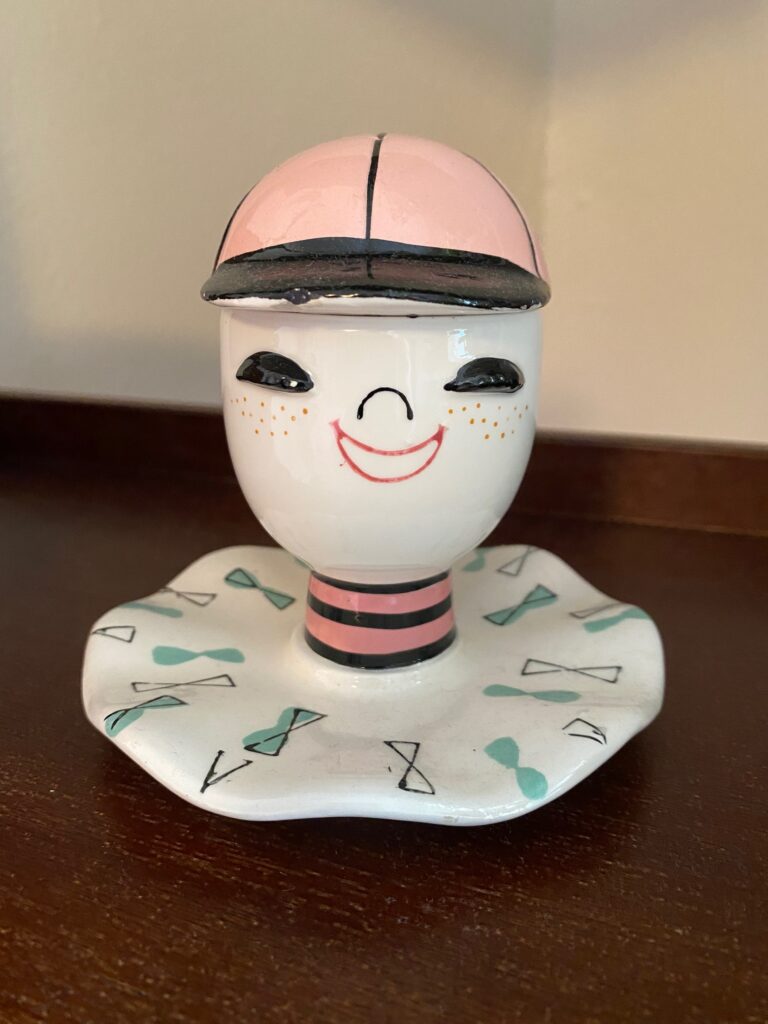
This topic has been on my list to dive into for ages now, and as we are approaching Easter and many of us will have leftover eggs looking for uses, I thought this would be a good week to take a look at the history of egg cups.
I would love to hear from anyone who collects or uses egg cups. Please comment below!
Ancient roots
I have long known that humans have consumed bird eggs for many centuries (and many other random facts only a history blogger knows), often hard or soft boiled. What I didn’t know was that egg cups themselves have also been in use since ancient times, the oldest existing possibly being one discovered in the ruins of Pompeii. I suppose that makes sense, as the artifacts found were surprisingly sophisticated (and could be the topic of an upcoming post!).
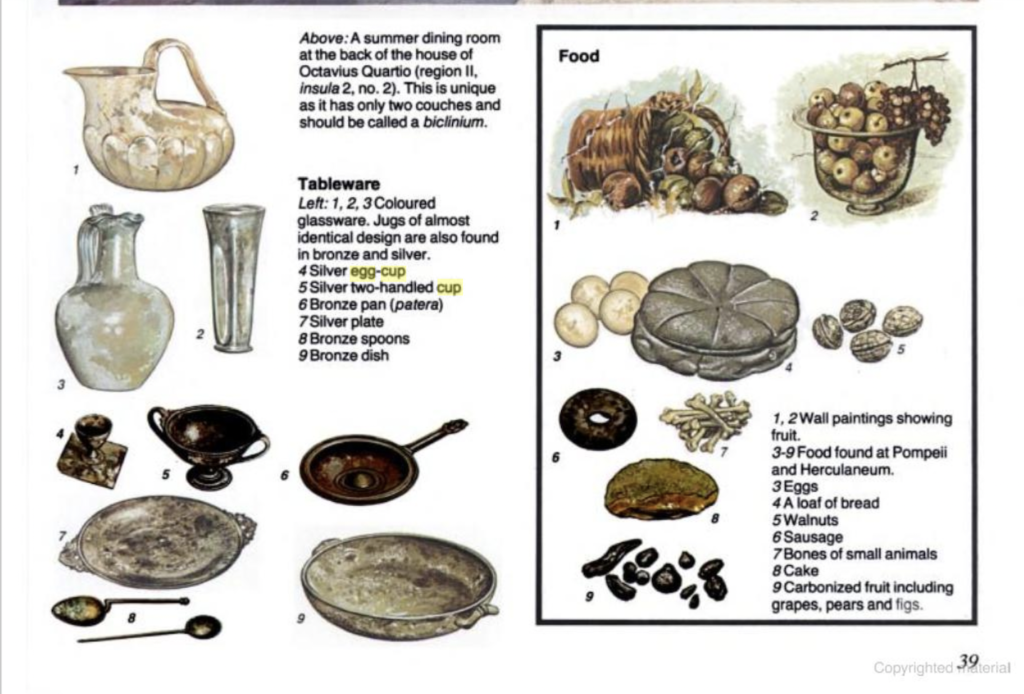
Can you spot the egg cup?
Egg cups through time
16th and 17th centuries
Egg cups are to this day widely used in Britain and parts of Europe, which I can personally confirm having lived in both London and Germany. I have heard they were often made of wood in the 16th century, though I was unable to locate any in the museum collections I searched. Instead, I found that egg cups from this time period were often made of silver and various metals.
I also discovered the fascinating world of ostrich egg cups from this time period, but as these were large cups made of eggs rather than for consuming eggs, I won’t include them here.
18th century egg cups
Ceramic egg cups would begin to make an appearance in the mid to late 1700s, a trend that lasts to this day. Popular styles and designs were delicate florals and light colors, trends reflected in other areas of design from the time.
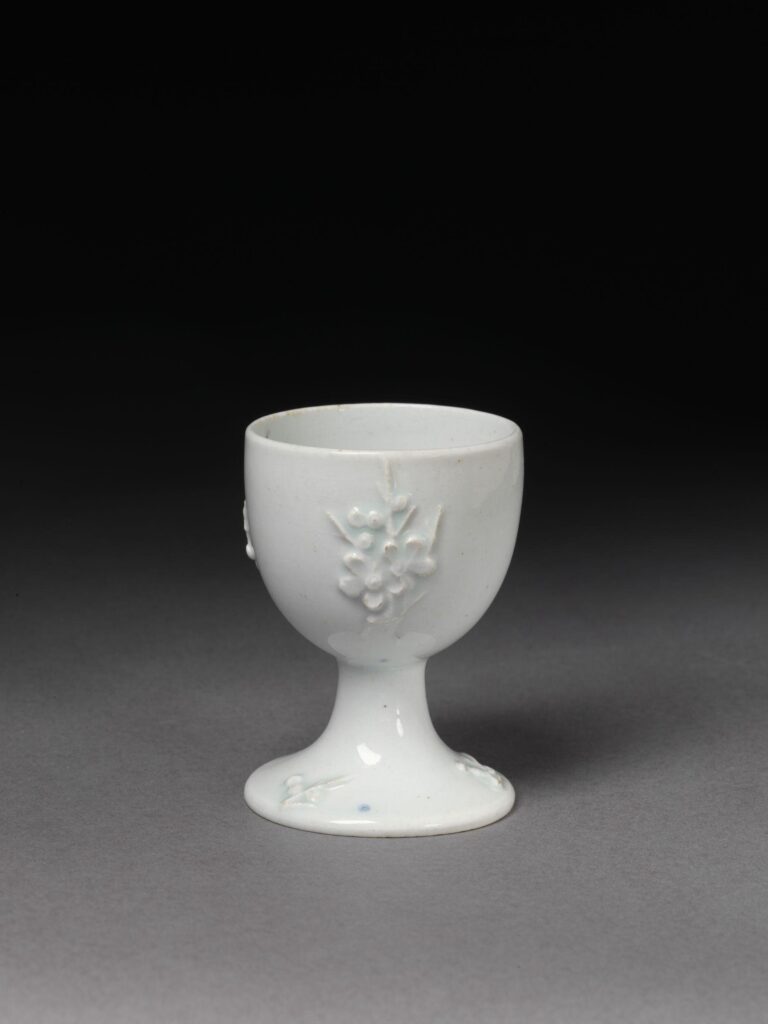
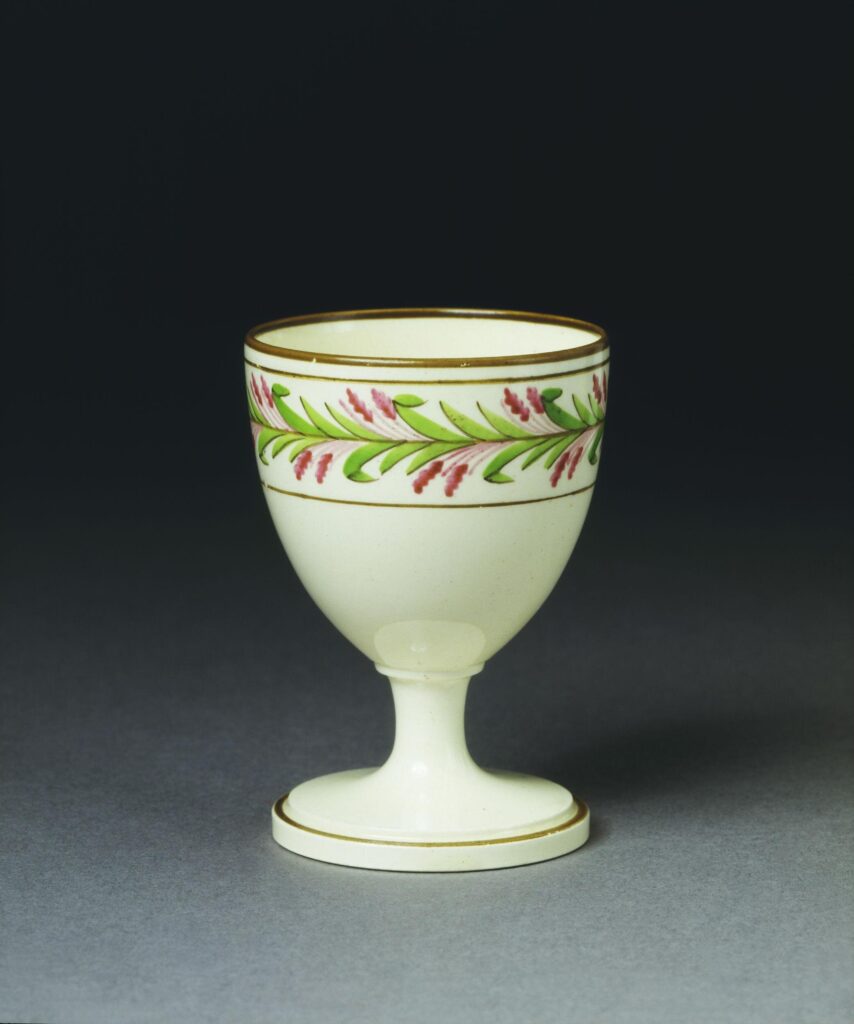
Silver and metal egg cups would also persist in popularity until the end of the century.
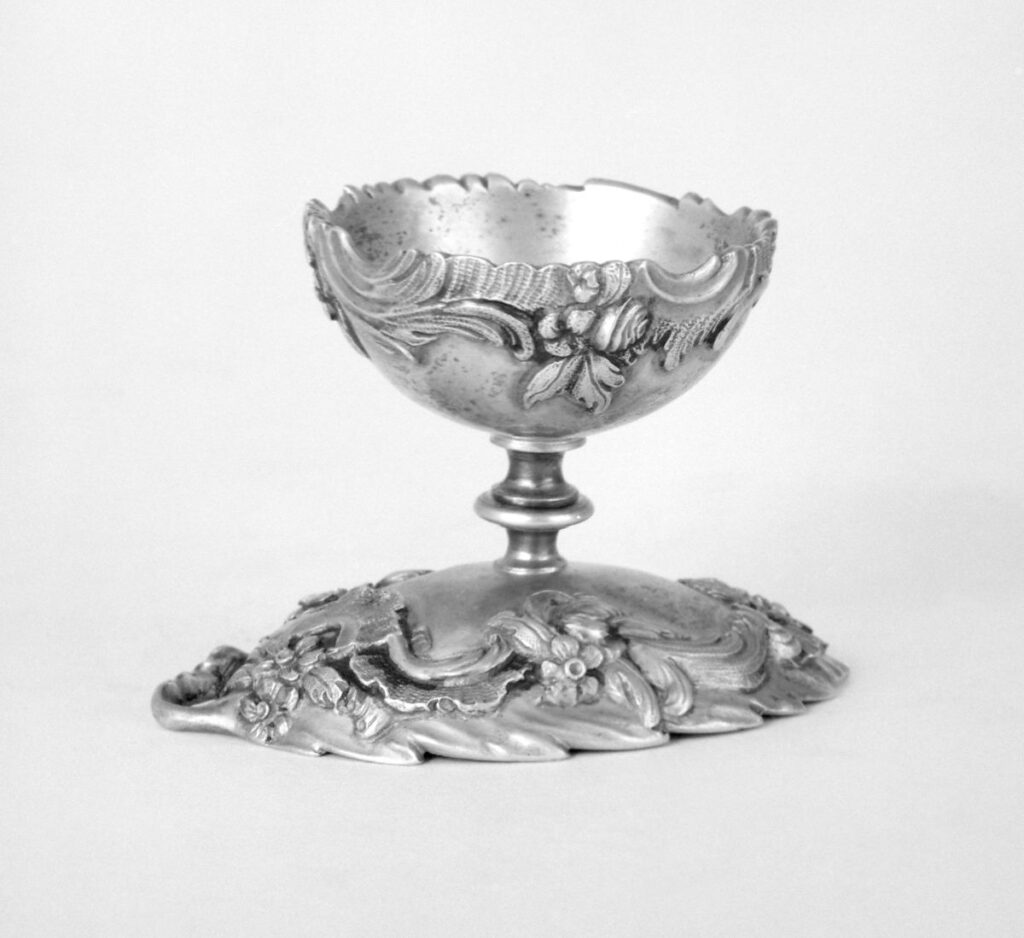
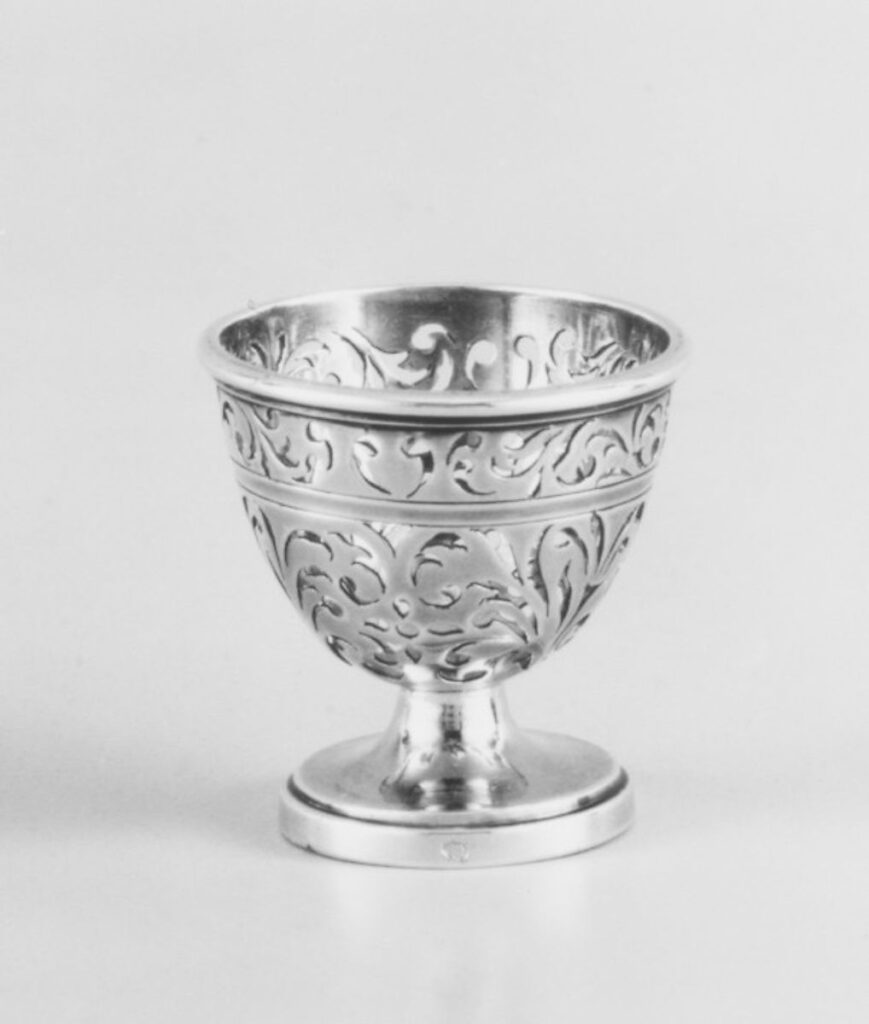
Image source: MetMuseum.org
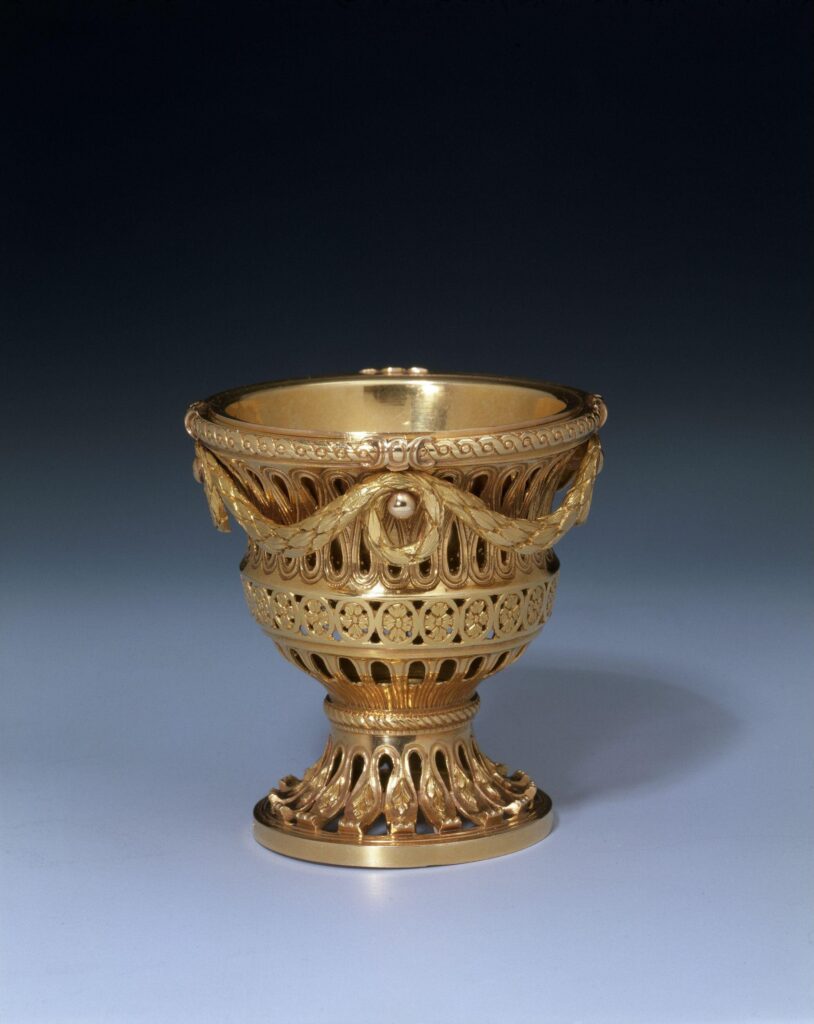
Honorable mention: Egg coddlers
Cousin to the egg cup is the egg coddler, a larger device made to prepare and then enjoy baked, or coddled eggs in. Says What’s Cooking America:
“An egg coddler is a porcelain or pottery cup with a lid that is used to prepare a dish called coddled eggs. The eggs are soft-cooked and similar to poached eggs, but the eggs are cooked more slowly than a boiled egg.
The lid is a secure top that either clamps on or screws on the dish/cup. The egg or eggs are broken into the buttered coddler and seasonings of your choice are added. The coddler is then closed with the lid and partially immersed in boiling water for a few minutes. When the eggs are cooked to the desired firmness, the coddler is lifted from the boiling water, the lid removed, and breakfast is served, in a lovely decorated dish.”
Egg coddlers are seen from the beginning of the 1800s on and I have to say, I could get used to this type of breakfast! Delicious and refined!
Some examples of egg coddlers from the 19th century.
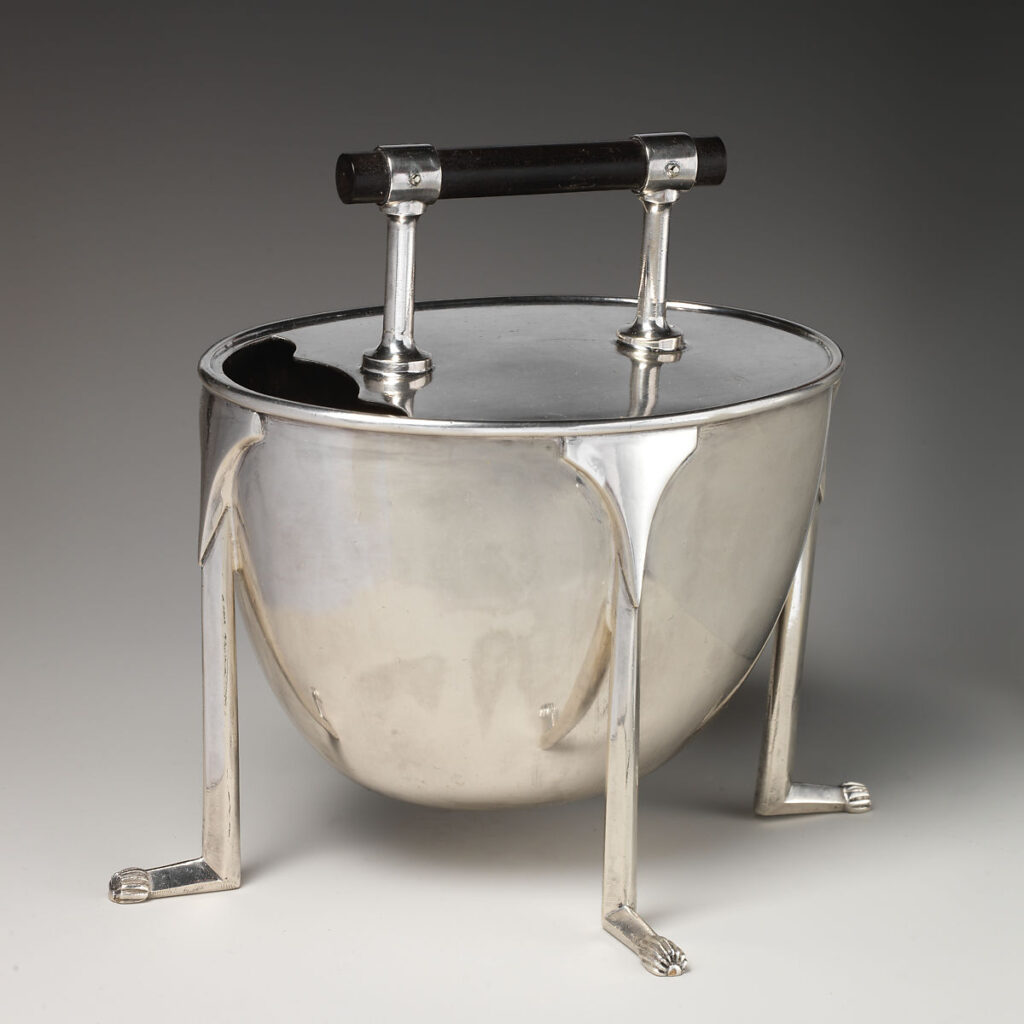
Image source: MetMusum.org
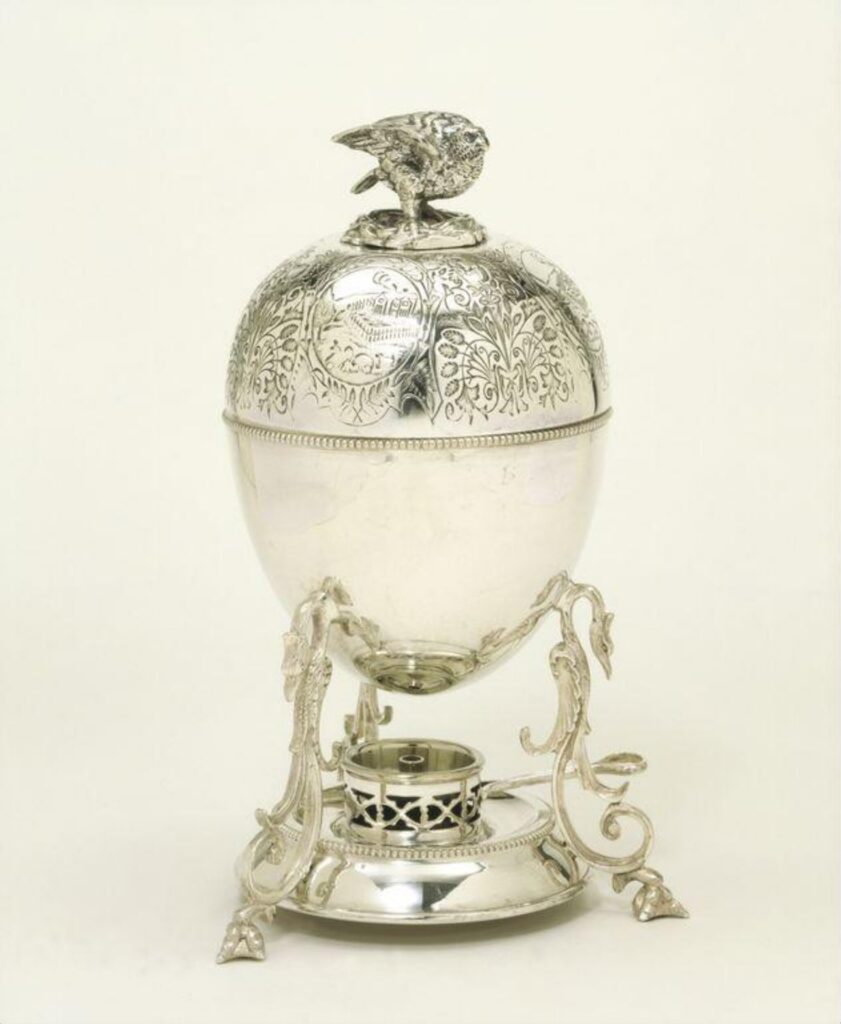
Image source: V&A Museum
I would love to have my breakfast served this way!
19th-century egg cups
Beautiful ceramic egg cups would be seen through the entire 19th century, though a larger trend would put them on the back burner, so to speak, for a couple of decades.
Beginning in about 1830 glass egg cups enjoyed time in the spotlight. They were manufactured using both clear and colored glass and I think a collection would pair perfectly with houseplant displays today.
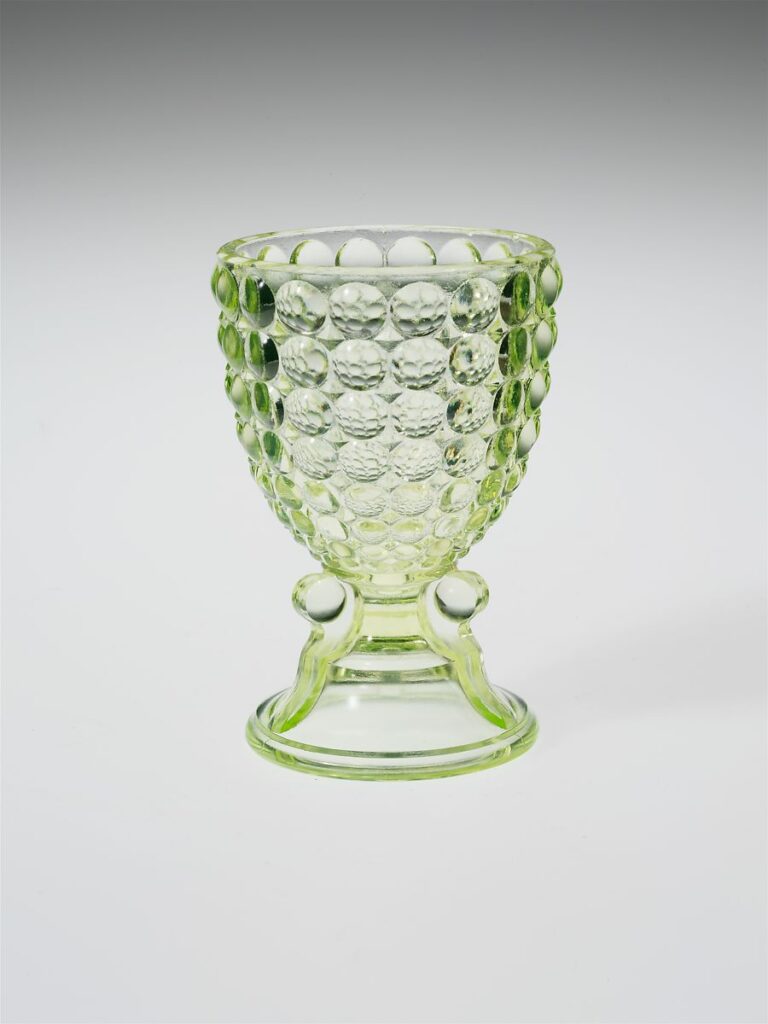
Image source: MetMuseum.org
More 19th-century egg cups
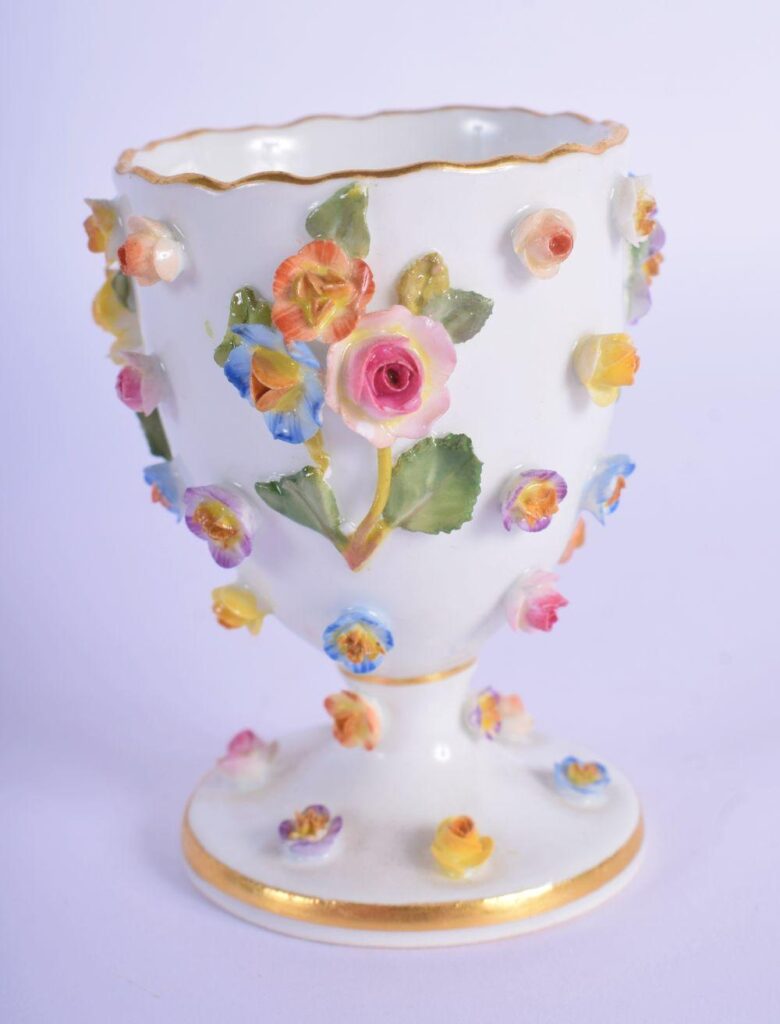
Image source: Invaluable.com
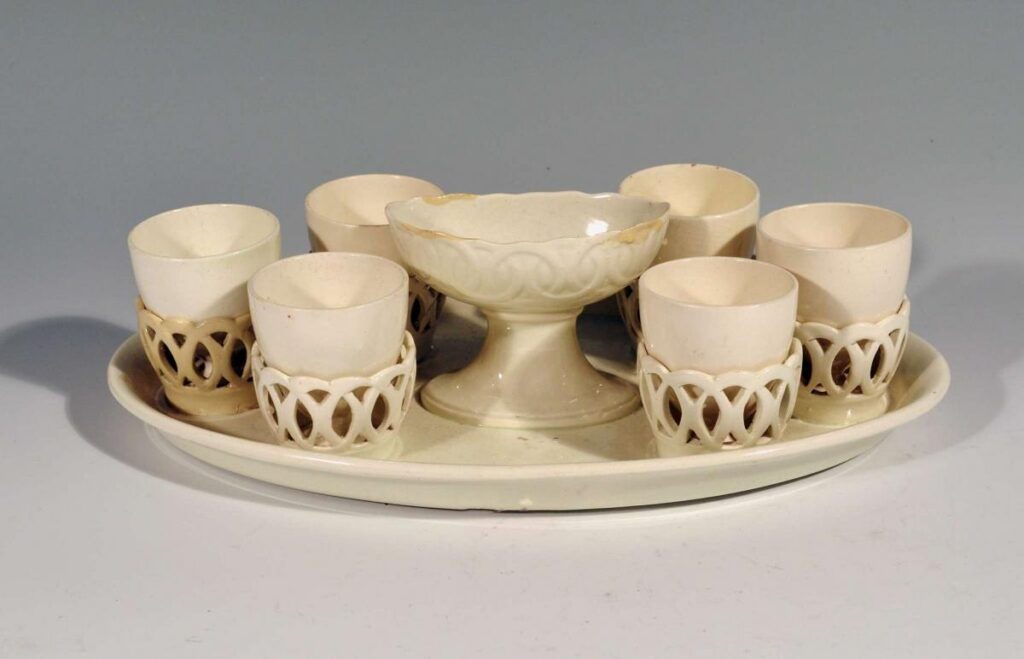
Image source: BADA.org
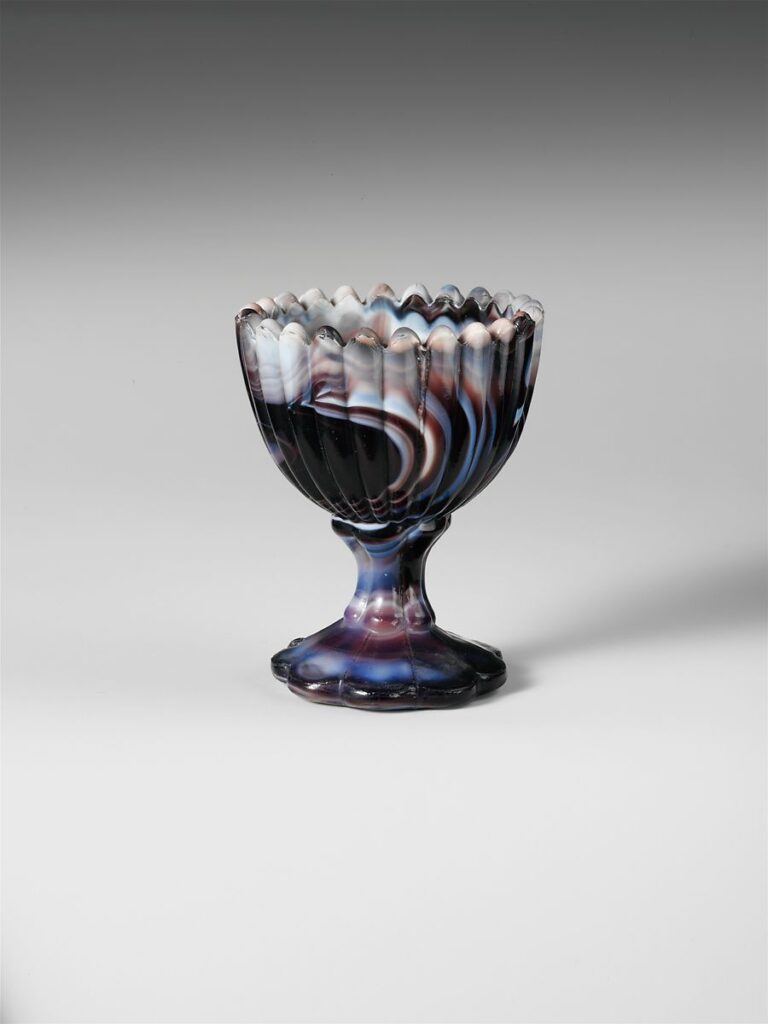
Image source: V&A Museum
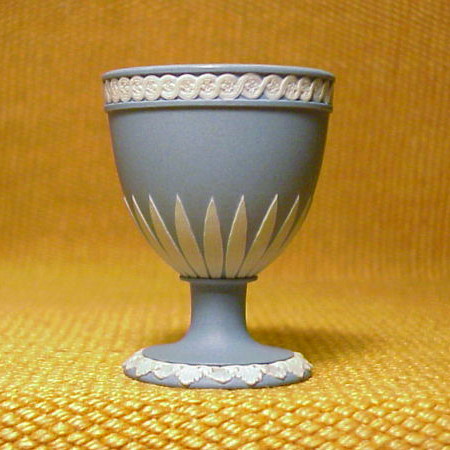
Image source: Seekers Antiques
20th century and beyond
Egg cups continued to be produced, most popularly in simple ceramics, until after WWI, when they would become more eccentric. A Herald Times Online article on the topic reads:
“Post-WWI eggcups were made all over the world as exports and sold as separate items, and they come decorated in every imaginable way. Poland and Czechoslovakia exported thousands of hand-painted glass and ceramic eggcups in the 1930s. In the 1950s and 1960s, most eggcups were Japanese exports, while today, if mass-produced, most eggcups come from China. Modern eggcups tend to be ceramic or plastic, rather than the glass or fine china of vintage or the metal of some antique ones. If made for adults, decoration tends toward floral or geometric designs around the bowl. Others appealing to children typically are shaped and colored like a familiar animal such as a teddy bear, puppy or a chicken. Handmade eggcups may be cast, turned or woven of metal wire and range from ordinary to extraordinary in shape. If ceramic, eggcups may be intricately decorated.”
Talk about a rabbit hole. Going looking for my top favorite post-WWI egg cups really distracted me from my responsibilities each time I went look over the past week. For now, I will leave you with these fun examples.

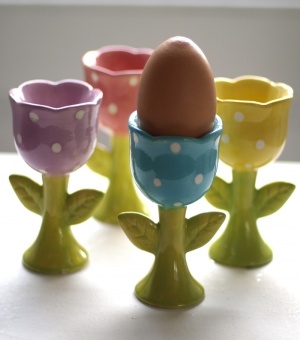
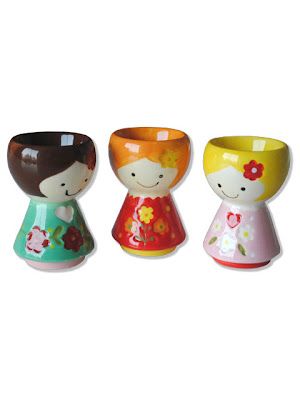
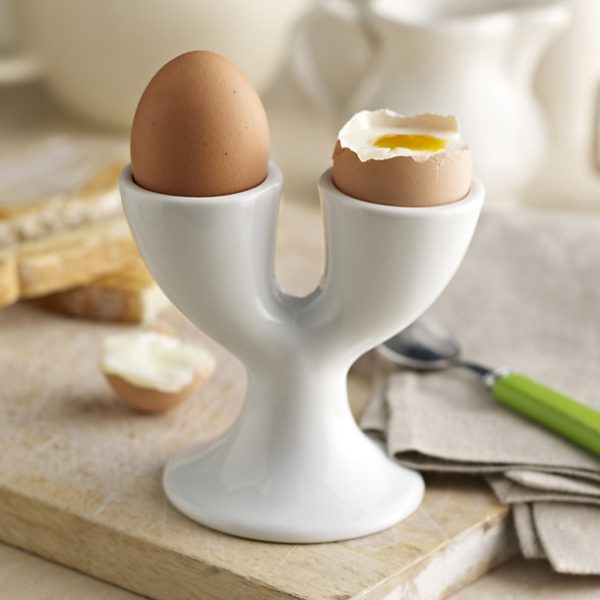
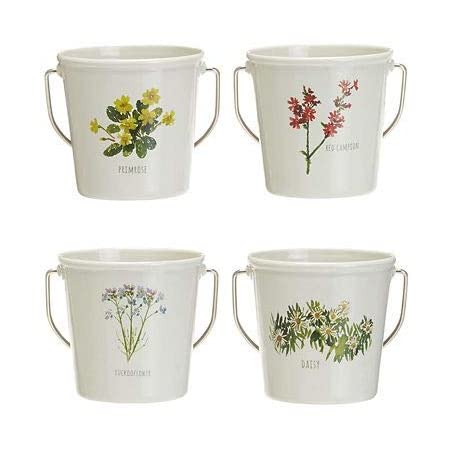
Happy Easter! I hope your weekend is filled with lots of egg fun, whether they be of the chicken, plastic, or chocolate variety.
More food fun:
The surprising history of hot chocolate

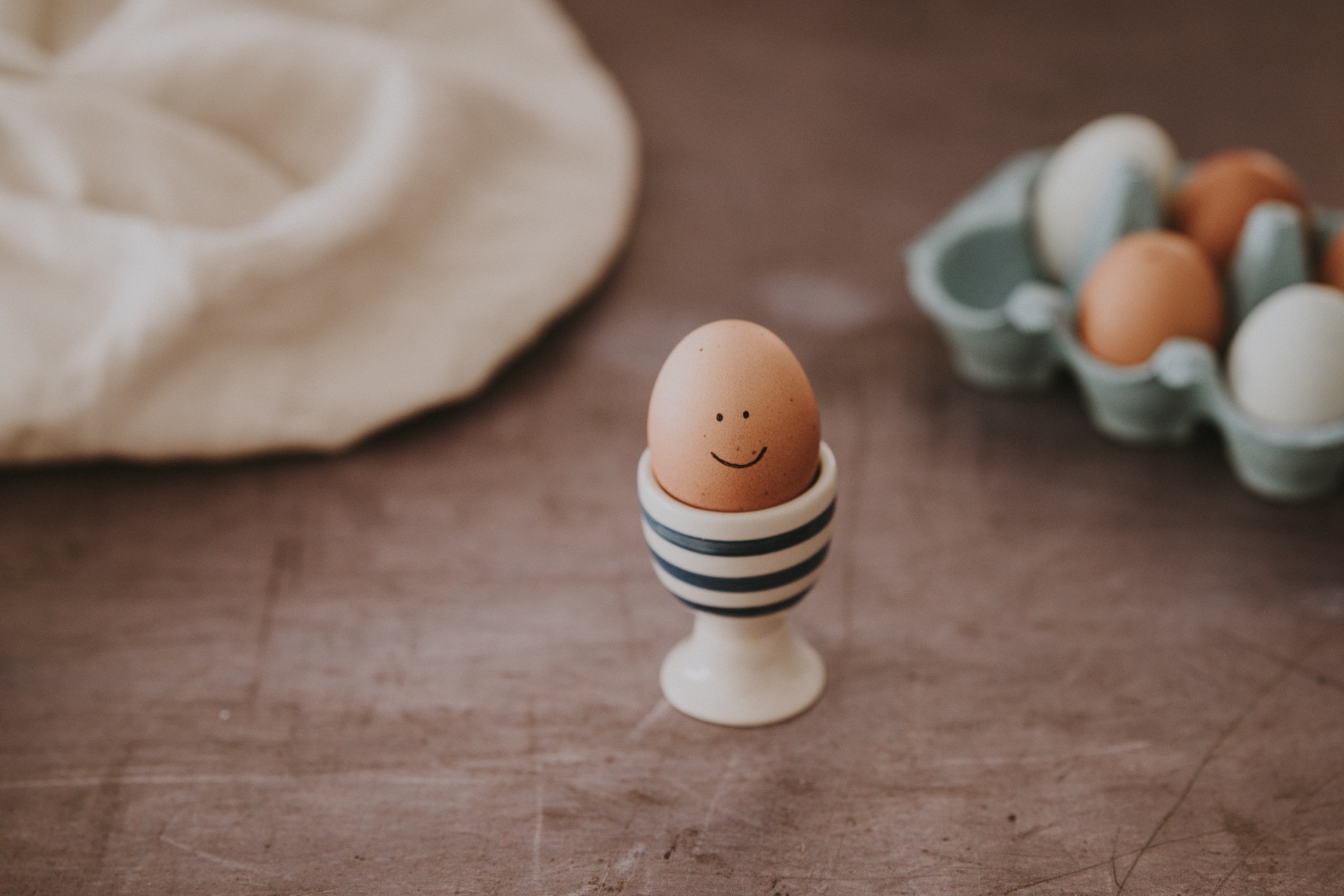
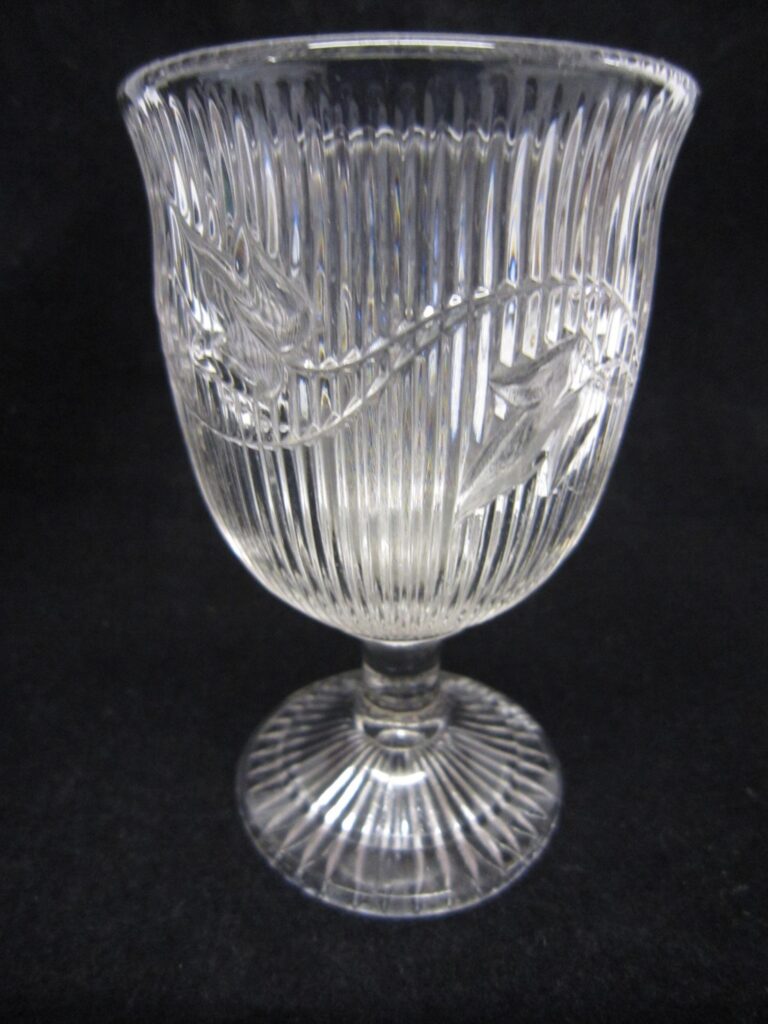

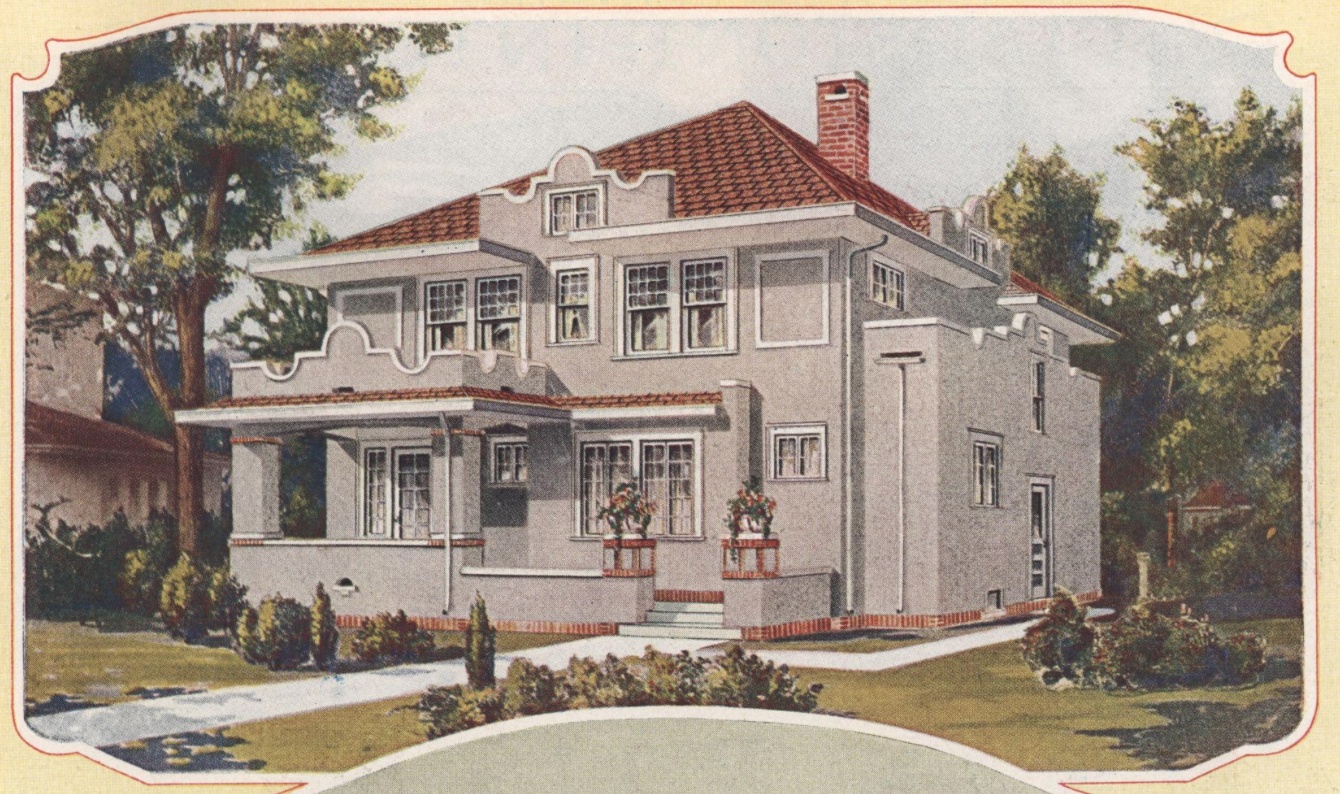









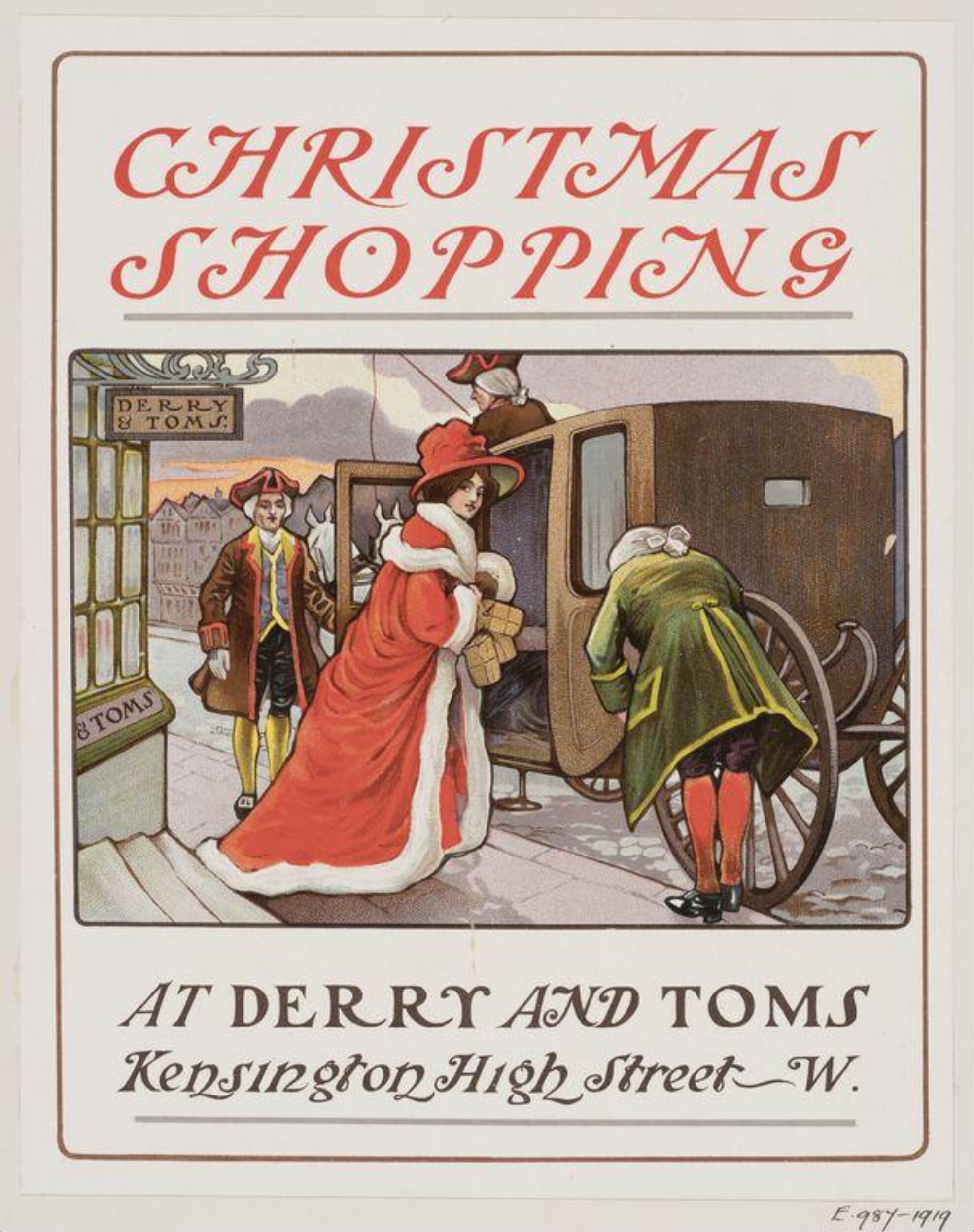
Adra I would love to see some pics and feature them on the blog if you are interested! Please email me at janiceclientcare@gmail.com.
My collection of egg cups began in the 1960’s after I received my first chicken shaped egg cup. Now I have over one hundred of them. When I traveled I’d pick up more out of Olive wood, ceramic, porcelain, steel and clay.
Really enjoy my colorful collection.
This is a nice, brief, well-rounded history of egg cups; a topic one just does not see. I’ve been a collector for many years. Collectors of egg cups are called pocilovists.